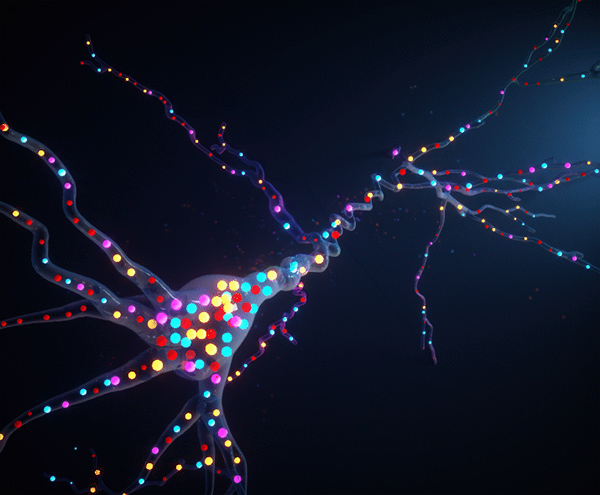Tools for recording high-speed brain dynamics

The brain is a three-dimensional, densely wired circuit that computes via sets of distributed cells signaling and interacting at fast timescales. In order to understand the brain, ideally it would be possible to observe the electrical activity, and other important intra- and intercellular signaling pathways, across many cells -- and ideally throughout entire brains -- with sufficient spatial and temporal precision to understand how they work together to mediate brain functions, and how they go wrong in brain diseases. We are developing a number of innovations -- such as new or improved fluorescent reporters of cellular signals such as voltage and calcium, ways to record neural activity and cellular signals into nucleic acid form (for later readout by sequencing), and new robotic and nanotechnological probes -- to enable such analyses of brain circuit dynamics and signals. We are also working on ways to use many fluorescent reporters at once, within single living cells, to record signals throughout a signaling network, by targeting different reporters randomly to different parts of cells so they can be imaged simultaneously. We are also inventing new kinds of microscope to image complex 3-D brain circuit dynamics and signals, with better speed and/or resolution. These tools will hopefully enable pictures of how brain cells work together to implement computations, and how these computations go awry in brain disorder states. Such observation strategies may also provide detailed biomarkers of brain disorders or indicators of potential drug side effects. These technologies may, in conjunction with optogenetics, enable closed-loop brain control technologies, which can introduce information into the brain as a function of brain state ("brain co-processors"), enabling new kinds of circuit characterization tool as well as new kinds of advanced brain-repair prosthetic. To build these tools, we are developing supporting approaches such as robotic and molecular strategies for multidimensional directed evolution of protein-based tools in mammalian cells.
Publications
Resources
SiRIs: spatial multiplexing of fluorescent reporters for imaging signaling network dynamics
SomaGCaMP: soma-targeted calcium indicators for precision neural population imaging
SomArchon: voltage indicator for population neural activity imaging
Archon1: well-localized, high-sensitivity, photostable fluorescent voltage indicator